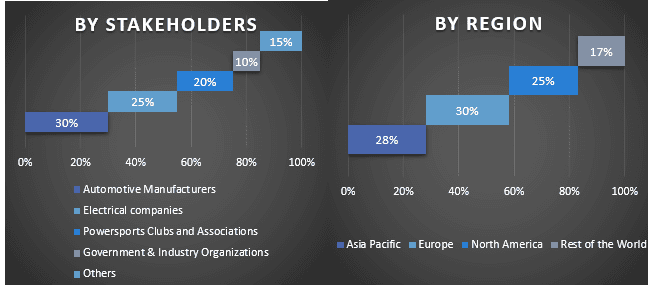- Home
- About Us
- Industry
- Services
- Reading
- Contact Us
Automotive Engine Management System Market: Current Analysis and Forecast (2022-2028)
Emphasis on Engine Type (Gasoline and Diesel); Components (Engine Control Unit (ECU), Engine Sensors, Fuel Pump, and Others); Vehicle Type (Passengers Vehicles and Commercial Vehicles)); and Region/Country

Global Automotive engine management system Market is expected to grow at a significant rate of around 5% during the forecast period 2022-2028. With increasing complexity in the vehicle, automotive engine management system has become a vital part of the vehicle. It is an electronic system that controls the running of engine by monitoring the engine speed and ensure engine performance. It consists of a wide range of electrical components that provides vital data for managing the engine, responsible for amount of fuel injected and adjusting ignition system, maximize the power with minimum consumption of fuel. Hence, these are the factors driving the growth of the market. In addition, companies are launching technically advanced products which is also having a positive impact on market growth. For instance, in July 2022, Dover Fueling Solution a part of DOVER launched a new technologically advanced dispenser for hydrogen and its first-ever four-nozzle Wayne Helix compressed natural gas (CNG) fuel dispenser in the Europe region.
Robert Bosch GmbH, ZF Friedrichshafen AG, Autoliv Inc., Continental AG, BorgWarner Inc, DENSO CORPORATION, HELLA GmbH & Co. KGaA., Panasonic Holdings Corporation, Hitachi, Ltd and Infineon Technologies AG. are some of the key players in the market. Several M&As along with partnerships have been undertaken by these players to facilitate customers with hi-tech and innovative products/technologies.
Insights Presented in the Report
“Amongst engine type, diesel category to hold a considerable share in the market in 2020”
Based on engine type, the market is segmented into gasoline and diesel. Diesel engine held a considerable share of the market in 2020. Diesel is in principle easier to refine than gasoline, however it contains more pollutants that must be extracted using engine management system, which enhance the efficiency of the engine and helps to perform better than usual. In addition, government are implementing policies for the manufacturers to produce the engine having less carbon emission. For instance, according to an official statement by the Ministry of Road Transport and Highways (MoRTH), In a bid to reduce pollution and introduce more fuel-efficient vehicles, the government has proposed to make it mandatory for light, medium and heavy-duty motor vehicles of various categories to comply with fuel consumption standards from April 2023.
“Amongst vehicle type, the commercial vehicles to hold a considerable share in the market in 2020”
Based on vehicle type, the market has been classified into passenger vehicles and commercial vehicles. Among these, the commercial vehicles to hold a considerable share in the market in 2020. The growing number of businesses had a direct impact on the production of commercial vehicles. The OEMs have a ready bandwidth of the commercial vehicles which helps to boost the growth of the market.
“APAC is anticipated to grow at a substantial CAGR during the forecast period”
For a better understanding of the market adoption of the automotive engine management system industry, the market is analyzed based on its worldwide presence in the countries such as North America (U.S., Canada, Rest of North America), Europe (Germany, U.K., France, Spain, Italy, Rest of Europe), Asia-Pacific (China, Japan, India, Rest of Asia-Pacific), Rest of World. APAC is anticipated to grow at a substantial CAGR during the forecast period. The main factors propelling the engine management system market are the forthcoming emission standards in Asia Pacific. For instance, China introduced China 6a and 6b, and India implemented BS VI requirements in 2020. Additionally, the market for luxury vehicles has grown significantly at the same period. Consequently, it is anticipated that the market for engine management systems in the area will expand significantly over the coming years.
Reasons to buy this report:
- The study includes market sizing and forecasting analysis validated by authenticated key industry experts.
- The report presents a quick review of overall industry performance at one glance.
- The report covers an in-depth analysis of prominent industry peers with a primary focus on key business financials, product portfolio, expansion strategies, and recent developments.
- Detailed examination of drivers, restraints, key trends, and opportunities prevailing in the industry.
- The study comprehensively covers the market across different segments.
- Deep dive regional level analysis of the industry.
Customization Options:
The global automotive engine management system market can further be customized as per the requirement or any other market segment. Besides this, UMI understands that you may have your own business needs, hence feel free to connect with us to get a report that completely suits your requirements.
Table of Content
Research Methodology for the Automotive Engine Management System Market Analysis (2022-2028)
Analyzing the historical market, estimating the current market, and forecasting the future market of the global automotive engine management system market were the three major steps undertaken to create and analyze the adoption of automotive engine management systems in major regions globally. Exhaustive secondary research was conducted to collect the historical market numbers and estimate the current market size. Secondly, to validate these insights, numerous findings and assumptions were taken into consideration. Moreover, exhaustive primary interviews were also conducted, with industry experts across the value chain of the global automotive engine management system market. Post assumption and validation of market numbers through primary interviews, we employed a top-down/bottom-up approach to forecasting the complete market size. Thereafter, market breakdown and data triangulation methods were adopted to estimate and analyze the market size of segments and sub-segments of the industry pertains to. Detailed methodology is explained below:
Analysis of Historical Market Size
Step 1: In-Depth Study of Secondary Sources:
Detail secondary study was conducted to obtain the historical market size of the automotive engine management system market through company internal sources such as annual reports & financial statements, performance presentations, press releases, etc., and external sources including journals, news & articles, government publications, competitor publications, sector reports, third-party database, and other credible publications.
Step 2: Market Segmentation:
After obtaining the historical market size of the automotive engine management system market, we conducted a detailed secondary analysis to gather historical market insights and share for different segments & sub-segments for major regions. Major segments are included in the report as type, drive type, and application. Further country-level analyses were conducted to evaluate the overall adoption of testing models in that region.
Step 3: Factor Analysis:
After acquiring the historical market size of different segments and sub-segments, we conducted a detailed factor analysis to estimate the current market size of the automotive engine management system market. Further, we conducted factor analysis using dependent and independent variables such as various type, drive type, and applications of automotive engine management systems. A thorough analysis was conducted for demand and supply-side scenarios considering top partnerships, mergers and acquisitions, business expansion, and product launches in the automotive engine management system market sector across the globe.
Current Market Size Estimate & Forecast
Current Market Sizing: Based on actionable insights from the above 3 steps, we arrived at the current market size, key players in the global automotive engine management system market, and market shares of the segments. All the required percentage shares split, and market breakdowns were determined using the above-mentioned secondary approach and were verified through primary interviews.
Estimation & Forecasting: For market estimation and forecast, weights were assigned to different factors including drivers & trends, restraints, and opportunities available for the stakeholders. After analyzing these factors, relevant forecasting techniques i.e., the top-down/bottom-up approach were applied to arrive at the market forecast for 2028 for different segments and sub-segments across the major markets globally. The research methodology adopted to estimate the market size encompasses:
- The industry’s market size, in terms of revenue (USD) and the adoption rate of the automotive engine management system market across the major markets domestically
- All percentage shares, splits, and breakdowns of market segments and sub-segments
- Key players in the global automotive engine management system market in terms of products offered. Also, the growth strategies adopted by these players to compete in the fast-growing market
Market Size and Share Validation
Primary Research: In-depth interviews were conducted with the Key Opinion Leaders (KOLs) including Top Level Executives (CXO/VPs, Sales Head, Marketing Head, Operational Head, Regional Head, Country Head, etc.) across major regions. Primary research findings were then summarized, and statistical analysis was performed to prove the stated hypothesis. Inputs from primary research were consolidated with secondary findings, hence turning information into actionable insights.
Split of Primary Participants in Different Regions

Market Engineering
The data triangulation technique was employed to complete the overall market estimation and to arrive at precise statistical numbers for each segment and sub-segment of the global automotive engine management system market. Data was split into several segments & sub-segments post studying various parameters and trends in the areas of type, drive type, and application in the global automotive engine management system market.
The main objective of the Global Automotive engine management system Market Study
The current & future market trends of the global automotive engine management system market were pinpointed in the study. Investors can gain strategic insights to base their discretion for investments on the qualitative and quantitative analysis performed in the study. Current and future market trends determined the overall attractiveness of the market at a regional level, providing a platform for the industrial participant to exploit the untapped market to benefit from a first-mover advantage. Other quantitative goals of the studies include:
- Analyze the current and forecast market size of the automotive engine management system market in terms of value (USD). Also, analyze the current and forecast market size of different segments and sub-segments
- Segments in the study include areas of engine type, components, and vehicle type.
- Define and analysis of the regulatory framework for the automotive engine management system
- Analyze the value chain involved with the presence of various intermediaries, along with analyzing customer and competitor behaviors of the industry.
- Analyze the current and forecast market size of the automotive engine management system market for the major region.
- Major countries of regions studied in the report include Asia Pacific, Europe, North America, and the Rest of the World.
- Company profiles of the automotive engine management system market and the growth strategies adopted by the market players to sustain in the fast-growing market
- Deep dive regional level analysis of the industry
Related Reports
Customers who bought this item also bought










